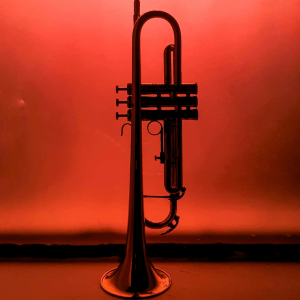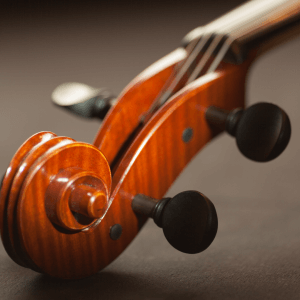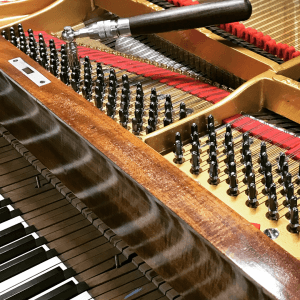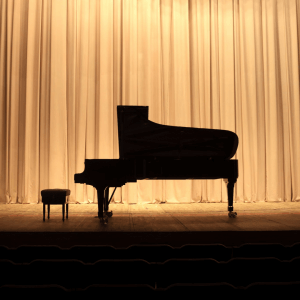An Introduction To Piano Tuning
The piano is one of a few instruments that the player cannot adjust the intonation themselves.
Brass players have tuning slides and string players have tuning pegs that can be adjusted in real time.



Pianists have to work with whatever tuning they have when they sit down to practice or perform.
This means that it is incredibly important for a piano to be tuned routinely and by a technician that can tune each string precisely.
Players have to be able to trust that notes will sound at the correct pitch and stay in tune over a period of time.
Pianos have 88 keys which play 88 individual notes. (Of course, with a couple of exceptions…)
Those 88 notes consist of 225 or more individual strings. Each note has between one and three strings depending on the location. The total number of strings will vary depending on the make, model, and length of the piano.
The strings are strung above the piano’s soundboard and cross over a bridge that is attached to the top of the soundboard. When a key is struck, the bridge transfers the energy and sound of the strings to the soundboard, which amplifies that sound and produces a beautiful tone.
All 225+ strings on a piano have to be precisely tuned so that each note and chord sounds beautiful from bottom to top.
Starting at the lowest note in the bass, each note of the first octave (give or take) has an individual copper wound bass string. Bass strings are made by wrapping a thin copper wire around a solid steel core. Each note in the next octave (give or take) has two or three copper wound bass strings per note. Every remaining note has 3 plain steel wire strings. Notes with 2 strings are referred to as bi-chords and notes with 3 strings are tri-chords. When the individual strings of a bi-chord or tri-chord are tuned to the same pitch, that is called a unison. The strings of a unison have to be tuned to each other perfectly so that they sound as a single note.

Each individual string is fixed at one end to a hitch pin and the other end is attached to a tuning pin. The tuning pins are tightly threaded into a wooden plank called a pinblock. Technicians finely adjust these tuning pins to change the pitch of each string to tune intervals, octaves, and unisons.
This process takes up to an hour to an hour and a half depending on how much adjustment is necessary.
Not only does a professional tuning make the piano sound beautiful, but also stabilizes the piano, extending the life of the tuning.
If a technician does not precisely adjust and set the tuning pins, notes can start to drift out of tune after a short period of time.
A number of factors will effect a piano’s tuning. How heavily and frequently a piano is played is one of the primary factors. Ideally, a residential piano that is played for an hour or so a day will be tuned twice per year. Pianos owned by avid players or professionals are typically tuned more often. Pianos at a university or music school are played heavily for hours a day and should be tuned 4+ times per year. Professional concert halls have their pianos tuned before every performance.
Even pianos that are only played casually should be tuned at least once per year.
This will avoid the need for large pitch adjustments. In addition, regular tuning helps to maintain tuning stability so that the piano stays as close as possible to standard pitch. If a piano is not tuned often enough, the pitch will drop more and more over time.
When the piano is finally tuned again, it will require multiple passes to bring the strings back up to the correct pitch.
Multiple passes can be performed during an initial tuning appointment as a start, but the piano will need additional tunings over the coming year to fully restore the tuning stability.
The end goal of any tuning appointment is for a piano to be tuned to standard pitch of A4 with a frequency of 440 Hz and have beautiful intervals, octaves, and unisons. Depending on how far a piano has drifted from A440, the piano may require multiple tuning “passes” to stabilize the tuning at the proper pitch.
Precise and routine tuning is the best way to maintain a beautiful sounding piano at the proper pitch.
Temperature and humidity fluctuations that accompany season changes have a huge effect on a piano’s pitch.
When humidity is high in the summer, a piano’s soundboard will take on moisture and swell up. This causes upward pressure against the strings that increases tension and makes their pitch to go up. As a result, a technician will generally have to lower the pitch of each string when they tune a piano during the summer months.


The opposite happens during the winter. Humidity drops, causing the soundboard to release moisture and contract. This means less pressure against the strings and the lower tension causes the pitch to drop. As a result, a technician will have to raise the pitch of the strings.
In addition to routine tuning, controlling temperature and humidity is the only other way to stabilize and maintain a piano’s tuning.
Thanks to modern HVAC systems, it is easy to keep the temperature of a home or performance venue within a safe range for a piano.
Controlling humidity can be a little more involved.
The ideal relative humidity for a piano is 45%.

In the Pittsburgh area, when the furnace is running consistently in the winter, the relative humidity in a home can drop below 25%.
If air conditioning is not used in the hottest months of the summer, relative humidity can climb to near 70%.
Large fluctuations like this will change a piano’s tuning drastically.
Anything that can be done to temper this change will help protect the piano.
There are different ways we can help stabilize the humidity of the piano. Air conditioning will draw the humidity down in the summer months and humidifiers will help keep the humidity up during the winter.
However, there can be limitations for both. The best solution in the piano industry are systems that can be installed in the piano to control humidity throughout the year. They are designed to create a micro-environment within the piano and maintain 45% relative humidity at all times.
Consistent humidity protects the soundboard and other wooden components that may otherwise swell and contract drastically throughout the year.
The byproduct of a stable soundboard is stable tuning.
